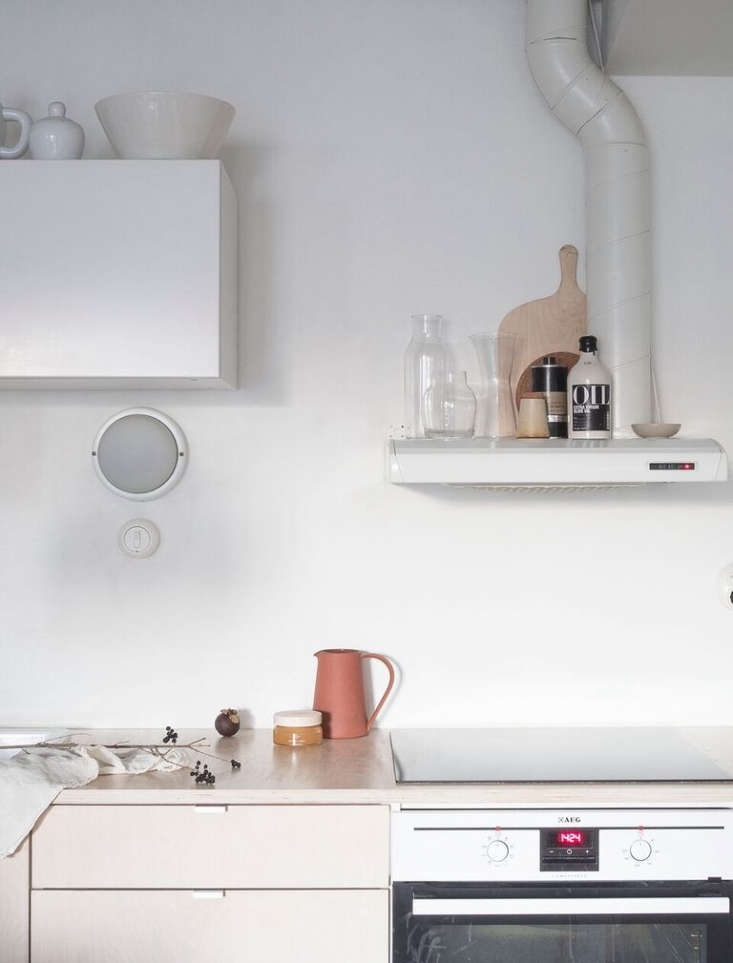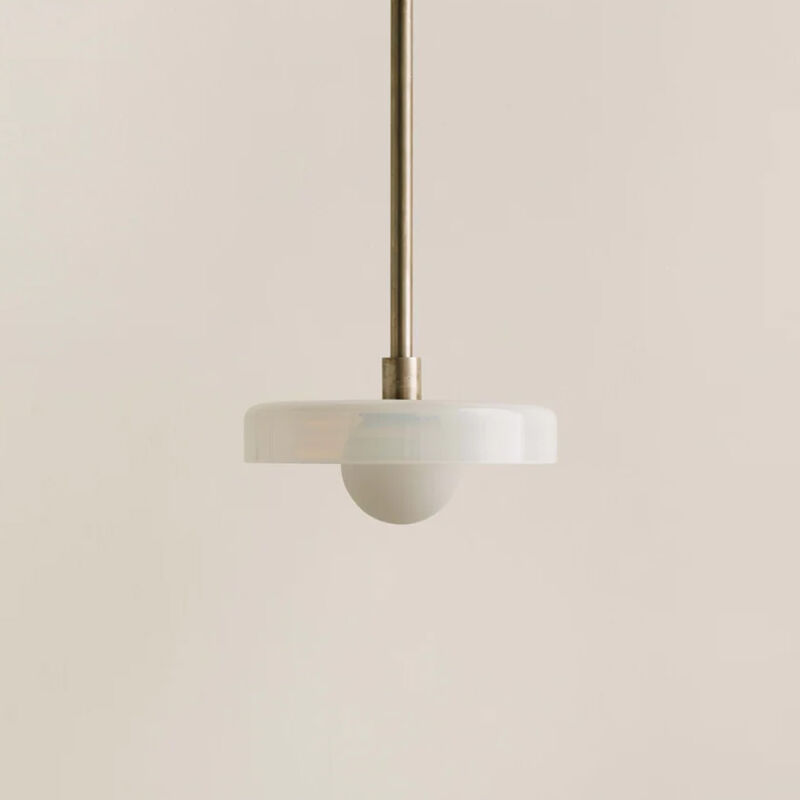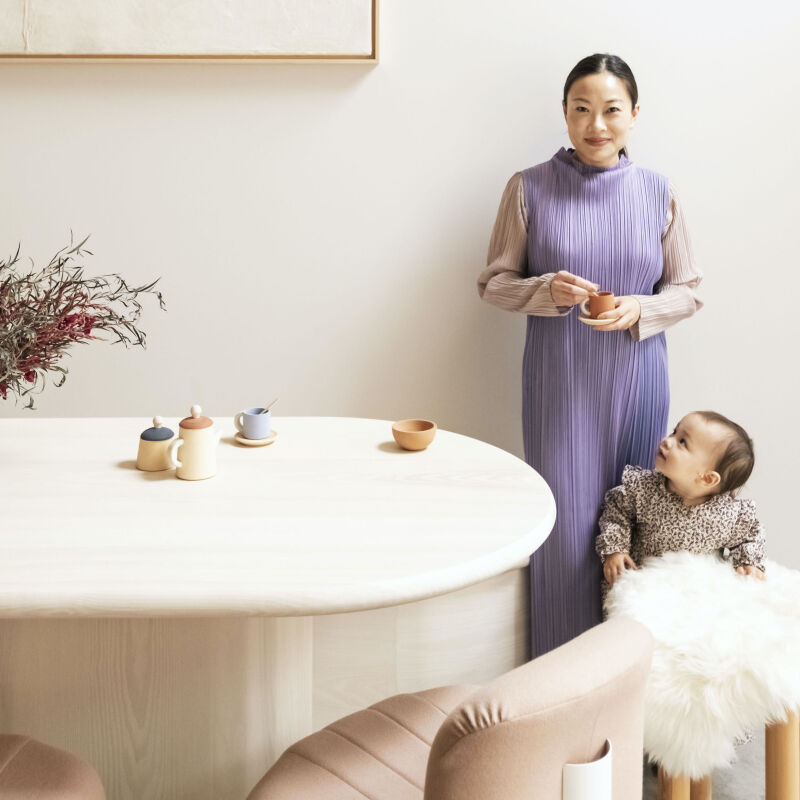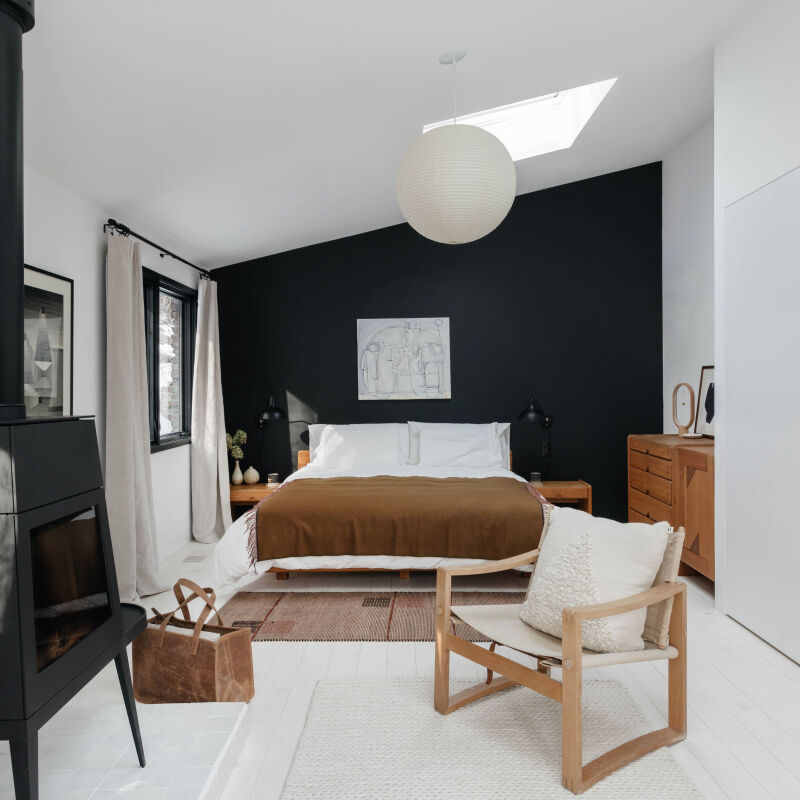In her monthly column for the Wall Street Journal, Gardenista editor Michelle tackles matters in interiors (even when her take is controversial). In this case, she suggests—dare we say it—embracing a little clutter. Hear her out (and see the original via the Wall Street Journal).

I am a recovering minimalist. Like a lot of people seduced by the bare-is-better aesthetic, for the past decade I believed that emptiness is next to godliness. When I moved across the country (twice), I got rid of coffee tables, lamps, my bed frame, more than 100 boxes of books, and even my husband’s favorite green wingback chair.
But I realized I’d gone too far the other day when I found myself sitting quietly in a bare room with raindrops slithering down a curtainless window pane. “Do you think we could get a space heater?” asked my husband, shivering on an Ikea knockoff of an Alvar Aalto stool.

Had I gone wrong by mistaking minimalism as a virtue when in fact it’s just a decorating style? There had to be a happier way to live, a comfort zone somewhere between recherché reductivism and A&E’s “Hoarders.” For advice, I called Julie Irwin, a business professor at the University of Austin at Texas who studies the relationship between buying things and happiness.
“It’s unrealistic to expect people to live completely in empty boxes and to think living that way makes us more pure,” Prof. Irwin said. “Some people like to express themselves through their things.“
I told her that after years of obsessively preventing objects from entering my home, I was afraid if I let my guard down I’d turn into a binge buyer. But before I could wrestle with the design question, I had to find philosophical peace: Doesn’t research suggest that materialism makes people unhappy?
“Actually, no,” said Prof. Irwin, who confessed to her own weakness for well-made black t-shirts from Everlane. “You might be unhappy if you try to substitute things for people, but not less happy if you just happen to like things.”

That sounded reasonable and I felt better about myself because while I like things, I definitely prefer my husband to the Ikea stool (most of the time). But I also was ready to admit that I like material possessions—very much—for the sensory pleasures they impart. I like the way a comfortable chair folds you up in its cushions. I like the old-library smell of books. And I like how framed photos reflect the light and turn it into a thousand shades of sun.
So now I needed to figure out where to start to create a warmer and more personal home. The goal was what interior designers call a layered-and-collected look, with slipcovers and curtains, family photos on the piano—and a bed frame to replace the flimsy metal platform the mattress store threw in for free. How does a recovering minimalist get the courage to start?

“Get away from the fear,” said designer David Alhadeff, founder of The Future Perfect shops in New York and California. With his clients, he sometimes finds himself in the position of being a shopping therapist to people who fear that buying a sofa or a table lamp is a lifetime commitment. He offers counterintuitive advice: “Don’t strive for success. Strive for failure.”
“Why would I do that?” I asked.
“When it doesn’t work out is when you’ll learn something,” he said. “If you buy a table lamp and don’t like it later, it’ll have secondary market value. You can resell it.”
Comforting to know. But I’d still rather avoid mistakes—and buy only furnishings that look right in my house.
The architectural style and size of a home dictates how much furniture can fit comfortably, Jessica Helgerson, a Portland, OR, interior designer told me. For instance, low-ceilinged rooms look cluttered faster than lofty, pre-war apartments with grand mouldings.
“Let the space you live in tell you what it wants,” she said.

In clients’ homes, Ms. Helgerson has a two-pronged approach: “I start with space planning, to figure out how everything is going to be laid out, and simultaneously I develop a palette of materials based on architectural style.”
For space planning, interior designers follow standard guidelines described in the industry’s widely used reference book, Time-Saver Standards for Interior Design and Space Planning. For instance, a comfortable amount of space between a coffee table and a sofa is 18 inches (to prevent bruised knees). In a dining room, there should be 42 inches of clearance around a table. And in a bedroom, choose a mattress size that allows 40 inches of clearance on the three sides of a bed not against a wall.
Before she pulls out the measuring tape, Ms. Helgerson settles on a few materials—like a specific stone or wood to complement a home’s architectural details—to repeat in every room “from the attic to the basement, even if it is an 8,000-square-foot house,” she said. The result is a unified and restrained backdrop for personal collections and clients’ favorite furnishings.

“You can’t be judgmental about the things you own, just make sure they are the things that make you happy,” said Ms. Helgerson, who keeps a little Mexican felt pig and a silver egg cup decorated with a cupid on her own desk.
As for avoiding clutter, “Gather things in some places to create collections, and in other spots create open spaces where the eye can rest,” she said. “That’s helpful.”
And if you’re still not ready for the commitment of owning more things?
“You can borrow and share things instead of buying them,” said Tim Kasser, a psychology professor at Knox College whose most recent book is Hypercapitalism: The Modern Economy, Its Values, and How to Change Them. “There are lending libraries where you can check out things like tools and seeds and even toys.”

Prof. Kasser sent me a list of some of his favorites, including Local Tools and USA Toy Library, both of which have locations nationwide. Unfortunately, there are no lending libraries for bed frames (yet).
Luckily, however, it didn’t take me long to find the one I realize I’ve been craving: a queen-size bed with a low wooden base and a caned headboard. It will be ready to ship this month, the manufacturer says, and after it arrives I also may buy a reading chair (wingback) for the bedroom. The Ikea stool will make a perfect side table.
More on the merits (and downsides) of minimalism:
- Expert Advice: How to Become a Minimalist, by the Author of “Goodbye, Things”
- Ikea Storage Solutions for Minimalists on a Budget
- The No-Cost Remodel: Carmella’s 7-Step Plan to Clutter-Free Living
Frequently asked questions
What is the article about?
The article is about the pros and cons of minimalism and the idea that it may be overrated.
What are some of the pros of minimalism?
Some of the pros of minimalism include a simplified and organized living space, reduced stress and anxiety, and enhanced focus and creativity.
What are some of the cons of minimalism?
Some of the cons of minimalism include a lack of personal expression and sentimental items, difficulty in adapting to change, and the possibility of boredom in an overly simplified environment.
Why is minimalism considered overrated?
Minimalism is considered overrated because it is often seen as a one-size-fits-all solution to a cluttered and overwhelming life, when in reality it may not be suitable for everyone.
What is the main takeaway from the article?
The main takeaway from the article is that while minimalism can have its benefits, it is important to find a balance that works for each individual's lifestyle and personal preferences.





Have a Question or Comment About This Post?
Join the conversation